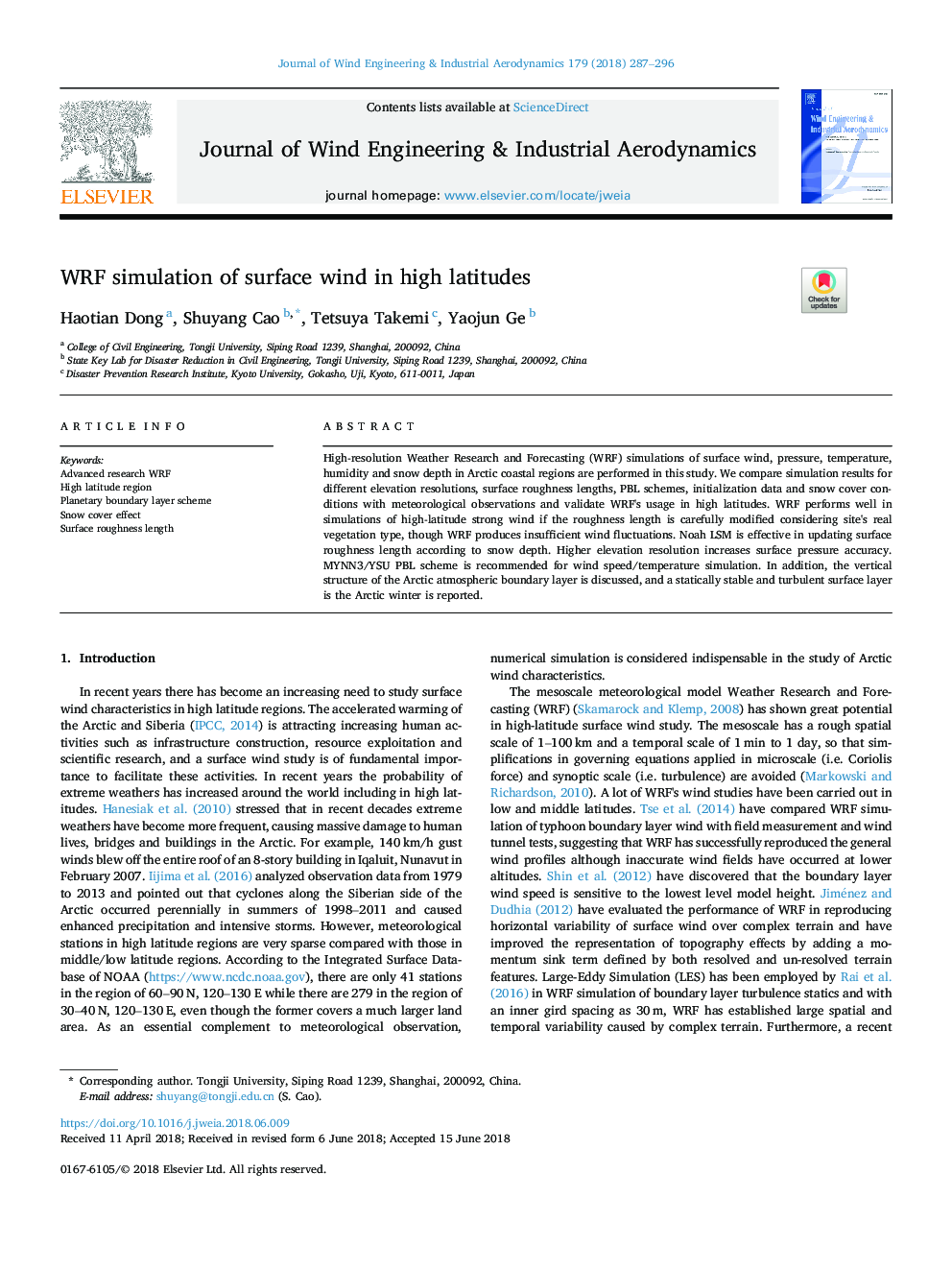| Article ID | Journal | Published Year | Pages | File Type |
|---|---|---|---|---|
| 6756827 | Journal of Wind Engineering and Industrial Aerodynamics | 2018 | 10 Pages |
Abstract
High-resolution Weather Research and Forecasting (WRF) simulations of surface wind, pressure, temperature, humidity and snow depth in Arctic coastal regions are performed in this study. We compare simulation results for different elevation resolutions, surface roughness lengths, PBL schemes, initialization data and snow cover conditions with meteorological observations and validate WRF's usage in high latitudes. WRF performs well in simulations of high-latitude strong wind if the roughness length is carefully modified considering site's real vegetation type, though WRF produces insufficient wind fluctuations. Noah LSM is effective in updating surface roughness length according to snow depth. Higher elevation resolution increases surface pressure accuracy. MYNN3/YSU PBL scheme is recommended for wind speed/temperature simulation. In addition, the vertical structure of the Arctic atmospheric boundary layer is discussed, and a statically stable and turbulent surface layer is the Arctic winter is reported.
Keywords
Related Topics
Physical Sciences and Engineering
Energy
Renewable Energy, Sustainability and the Environment
Authors
Haotian Dong, Shuyang Cao, Tetsuya Takemi, Yaojun Ge,
